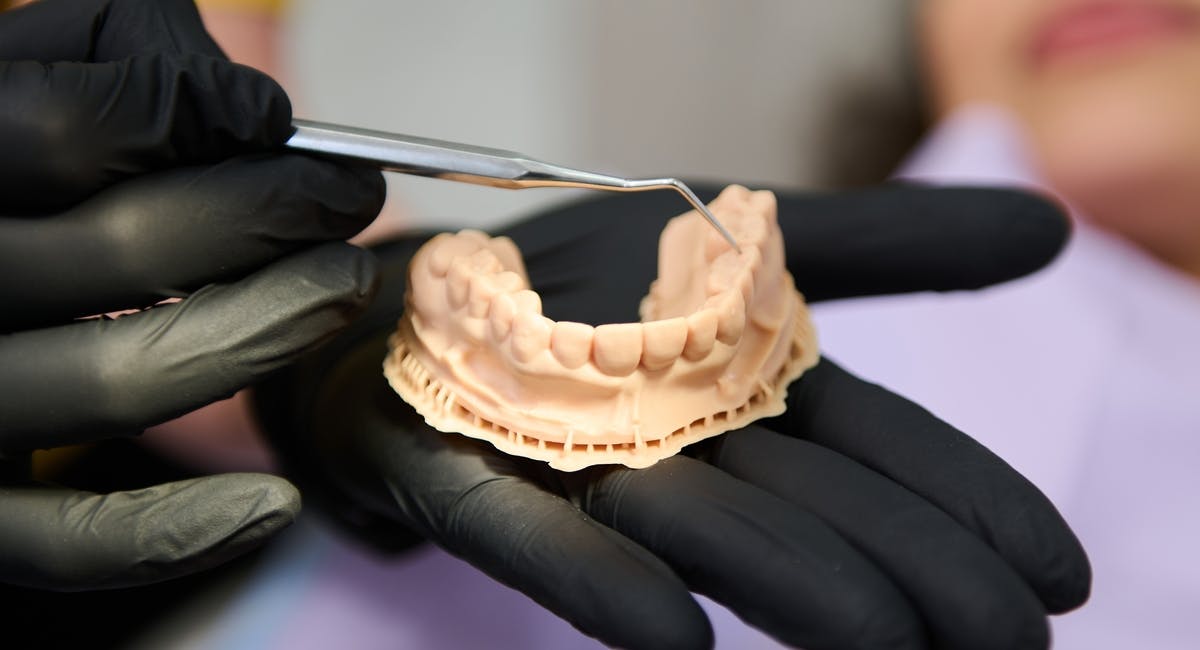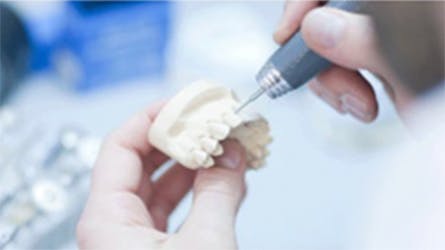Different Types of Dentures and How to Care for Them

Learn more about the different kinds of dentures
Whether it’s a denture, bridge, or implant, there are numerous ways to replace your missing teeth.Your dentist or prosthodontist will be able to recommend the best option for you. If your dentist recommends dentures, there are several types on the market—each made from different materials and serving different purposes. It’s important to understand what their differences and benefits are when deciding on the best type of dentures for you. Here’s a look at some of the options:
Full dentures
Full dentures, or complete dentures, are removable devices used to replace missing teeth that consist of both upper and lower sets .1 The denture teeth are made from porcelain or acrylic and are held together by an acrylic or metal base.1 Full dentures may be needed when you lose all of your teeth; they can help you to speak and eat normally, and fill out your appearance and help the muscles in your face and jaw work properly, leaving you feeling more confident to smile.2
Both upper and lower dentures rest on the gum tissue, where the suction helps to keep them in place. Denture adhesive can also help secure your dentures and can help prevent any food particles from becoming trapped under the denture and causing discomfort.1 With proper care and maintenance, full dentures can last anywhere from 5–10 years.3

Partial dentures
Upper and/or lower partial dentures are designed to fill the gap created by missing teeth.4 Partials can be unclipped and removed when needed, helping you feel more confident if you’re missing a small number of teeth.4
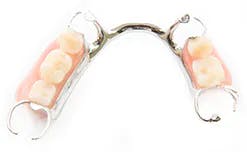
Temporary dentures
Temporary dentures, or immediate dentures, are dentures that can be fitted right after your teeth have been removed.5 They are an option to help you carry on as normal while waiting for your new permanent dentures to be fitted. Your dentist will take measurements and models of your teeth beforehand so the dentures are ready for you to wear while your jaw is healing.5 You can return to eating the foods you love without putting too much pressure on your remaining natural teeth.6
These may be recommended by your dentist to help ease your mouth into wearing dentures, so you can establish speech patterns while getting used to your new appliance.6 By reducing the pressure on your remaining natural teeth when eating, temporary dentures will let the tissues in your mouth heal without you needing to make any major changes to your lifestyle.6
Flexible dentures
Flexible dentures are a kind of partial denture, but they are made of different materials from ordinary partial dentures.7 Most flexible dentures are made of a thin thermoplastic such as nylon, compared to the thicker, more rigid acrylic used in full dentures.7
You may find that flexible partial dentures are a more comfortable fit than other removable partials, especially if you’re still new to wearing replacement teeth.7
Fixed bridge
A fixed bridge is used to replace missing teeth by surgically cementing an artificial tooth, known as a crown, to the remaining natural teeth on each side, allowing them to provide support for the bridge.4 Like all surgically fixed dentures—including implants, implant–supported dentures, and snap-on dentures—fixed bridges tend to cost more than removable dentures.
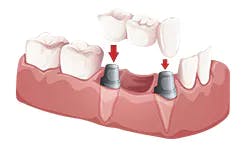
Cantilever bridge
A cantilever bridge is recommended when a molar is missing and there are no teeth on one side to support the bridge.4 One or more teeth on the other side are instead used for support.4
Implants
Dental implants are artificial tooth roots made of metal, often titanium.4 They are surgically placed into the jawbone; bone tissue and fuses with them for a secure, natural fit.4
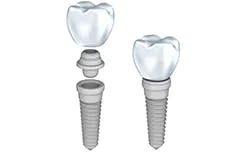
Implant-supported fixed dentures
Implant-supported fixed dentures are held in place with implants in the jawbone.2 They are intended to prevent bone loss and are designed to be comfortable, stable and long-lasting.2 They allow for more natural biting and chewing, and because your bone tissue will fuse with the implants, the overall structure of the jaw is preserved.2
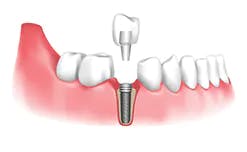
Snap-on dentures
Snap-on dentures, also known as removable implant-supported dentures, are removable crowns that fit on surgically inserted implants in your jawbone.8 They fasten securely so you can chew the foods you love without worrying about your dentures coming loose and can take them out every day for easy cleaning.8
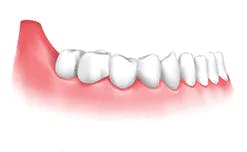
No matter which type of dentures you get, remember it’s important to take proper care of them. Polident denture cleansers and Super Poligrip denture adhesives are here to help you embrace life with dentures.
Source Citations:
- What is a Denture? Academy of General Dentistry. http://knowyourteeth.com/infobites/abc/article/?abc=D&iid=186&aid=1230. Accessed 10/17/23.
- Dentures and Implants: Solutions for Missing Teeth. University of Illinois Chicago. https://dentistry.uic.edu/patients/dental-services/general-family-dentistry/dentures-and-implants-solutions-for-missing-teeth/. Accessed 10/18/23.
- Longevity of complete dentures: A systematic review and meta-analysis. National Library of Medicine. https://pubmed.ncbi.nlm.nih.gov/32359852/. Accessed 10/18/23.
- Types of Dentures. National Library of Medicine. https://www.ncbi.nlm.nih.gov/books/NBK279192/. Accessed 10/17/23.
- Dentures. MouthHealthy. https://www.mouthhealthy.org/all-topics-a-z/dentures/. Accessed 10/18/23.
- Immediate Dentures. Iowa College of Dentistry and Dental Clinics. https://dentistry.uiowa.edu/immediate-dentures. Accessed 10/18/23.
- Flexible denture base material: A viable alternative to conventional acrylic denture base material. National Library of Medicine. https://www.ncbi.nlm.nih.gov/pmc/articles/PMC3276859/. Accessed 10/18/23.
- Implant Supported Dentures. Cleveland Clinic. https://my.clevelandclinic.org/health/treatments/24303-implant-supported-dentures. Accessed 10/18/23.




